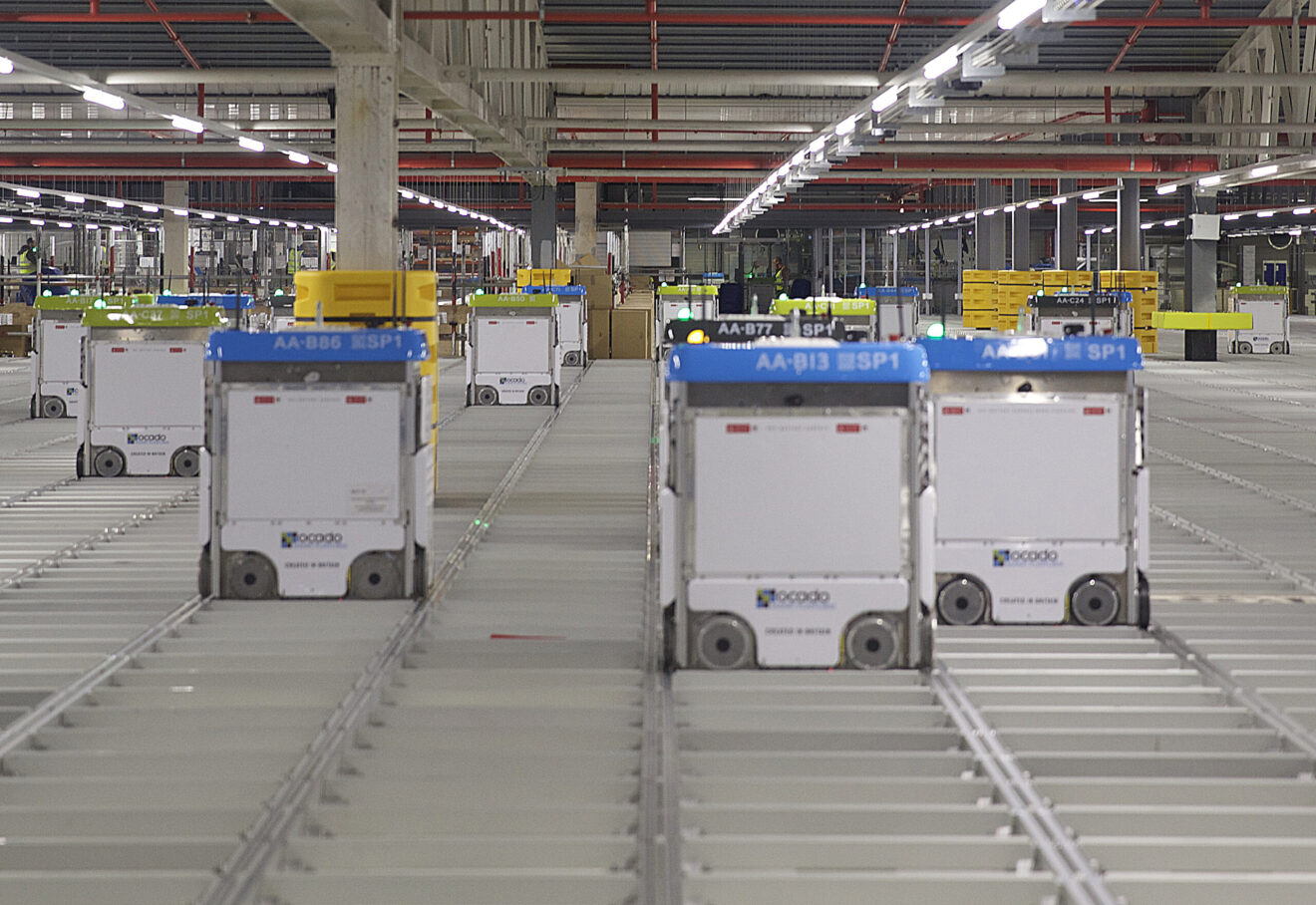Online grocery shopping is growing at an unprecedented rate. Research from Nielsen and the Food Marketing Institute found that consumers could spend as much as $100 billion annually on online grocery within the next three years. Additionally, 49% of consumers shop for CPG products online — a figure that could reach 70% in the next four to six years.
To handle the massive shift taking place, grocery retailers are finding ways to fulfill orders both in the store and outside the store.
Technology takes the lead
Through a partnership with British online retailer Ocado, Kroger plans to build 20 automated grocery warehouses around the country to fulfill e-commerce orders, starting with one near its hometown of Cincinnati, Ohio. Ocado’s warehouse technology includes grocery-packing robots that work along a grid and can fully communicate with each other. At one of the company’s UK sites, robots can pack up to 65,000 grocery orders each week.
“Kroger is joining with the best partners in the world to co-innovate and leverage technology to redefine the customer experience,” said Kroger CEO Rodney McMullen in a press release. “…This Kroger shed, powered by Ocado, will accelerate our ability to provide customers with anything, anytime and anywhere.”
Automated micro-fulfillment centers are also taking center stage among retailers. Albertsons, for example, is working with startup Takeoff Technologies to pilot a micro-fulfillment center that is co-located with a current retail location. Takeoff’s technology is also powered by robots, though the grocery order is handed off to a human to complete the transaction.
Walmart is yet another retailer working with robots to make its e-commerce fulfillment faster. The retailer announced last year that it is collaborating with Massachusetts-based Alert Innovation to install the Alphabot robot in one of its stores. The robot will collect and pack grocery orders, which are then transferred to one of the store’s personal shoppers, thereby streamlining the job of the human employee.
“Alphabot will work behind the scenes to make the process even easier by automatically bringing items from storage to associates who will consolidate the items in the order,” wrote Walmart executive Mark Ibbotson. “For our pickup associates, that means less time walking the store aisles in search of products and more time ensuring customers are getting the absolute best in fresh produce, meats, etc.”
Making the conversion
In addition to technology solutions, retailers are increasingly converting former stores into fulfillment centers. Walmart’s Sam’s Club has done so with at least four of its shuttered locations, starting with a store in Memphis, Tenn., last year. The center is located within a few miles of a shipping hub, and the company says its future network of smaller fulfillment centers will allow for one- or two-day shipping to most of its customers.
“This FC is going to make sure our members get their orders even faster, and we’re excited about what this means for our business,” said Sam’s Club’s Mohan Akella in a press release.
H.E. Butt Grocery also shuttered one of its underperforming Houston locations last year and reopened it as its first fulfillment center in the city to service curbside pickup and online delivery orders.
Moving forward
While not all retailers are going full-speed ahead with robots and automated warehouses, there is likely to come a time when they will look to do so. “[Grocery and foodservice companies] are looking for growth paths,” Dematic’s Sean O’Farrell told DC Velocity. “For instance, they may be using a person to operate a pick cell, but seven years from now they want to be able to put a robot in that existing cell. They may not be ready for it now, but they want to make sure the system is designed so that they can add to it in the future.”
Retailers are making strides with the initial picking and packing of orders, but the last mile of e-commerce grocery fulfillment is still up in the air, according to Knapp’s Kevin Reader. “Still to be seen is how the home delivery piece is going to fall out because it’s the most expensive part of the equation,” he said. “That, I think, is the piece that is still very much in play.”
Related stories:
- Taking the pulse of SmartLabel
- Robotics in the food industry: Where’s the opportunity?
- How retail positioning helps boost CPG sales
_______________________________________
If you enjoyed this article, sign up for GMA SmartBrief or FMI dailyLead to get news like this in your inbox, or check out all of SmartBrief’s food and travel newsletters as we offer more than 30 newsletters covering the food and travel industries from restaurants, food retail and food manufacturing to business travel, the airline and hotel industries and gaming.
